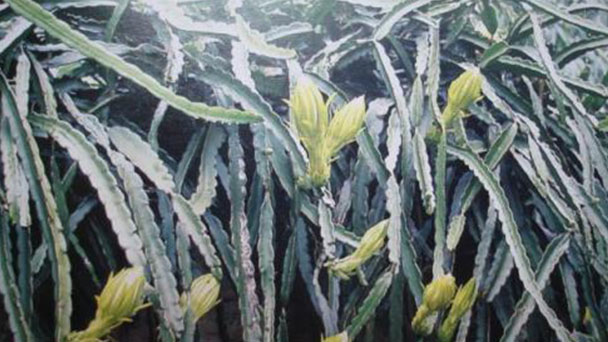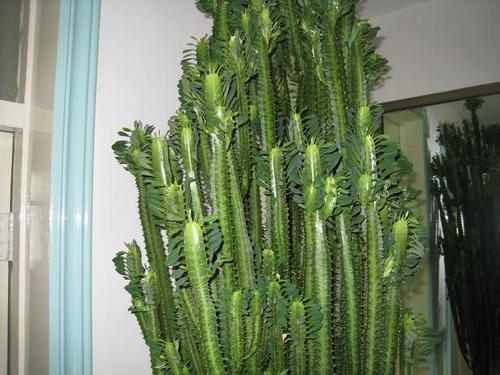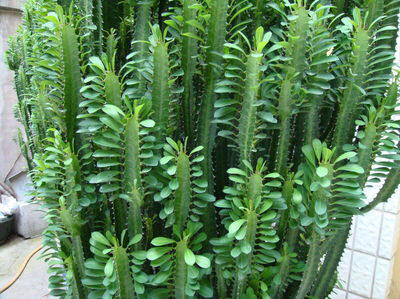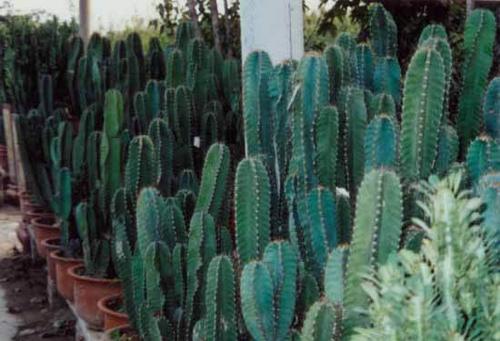How to grow White-fleshed pitahaya
Written by Maggie
Dec 14 2020

White-fleshed Pitahaya has a good purification effect in household applications. For houses between newly renovated families and office buildings, it has a good adsorption effect on formaldehyde, benzene, radon, ammonia and TVOC.So how are the white-fleshed Pitahaya fleshed out?What good method does breeding have again?What fleshed out Fleshed Pitahaya need to pay attention to?Please read along with me with questions!

Cultivation methods of white-fleshed Pitahaya (basic knowledge) :
Optimal time for reproduction: Cutting propagation can be used more often in spring, summer and autumn, especially from April to June.
The best growing soil: The White-fleshed Pitahaya potted soil should be a culture soil composed of humus, garden soil and river sand of equal amount, plus a small amount of bone powder or plant ash.In south China and Southern Fujian area, it can be cultivated in open fields, often planted beside walls or trees for climbing.In the north, indoor cultivation is only appropriate, potted, but due to adequate light, otherwise it is easy to grow poorly in the dark for a long time.
Requirements for growth humidity: White-Fleshed Pitahaya should not be watered too much in spring, and it is enough to water the plants once every 10 to 15 days. However, water should be sprayed on the plants every day to increase air humidity.Water should be watered once a day in summer, preferably in the morning or evening.Winter basin soil should be kept moderately dry, plastic film can be used to cover the basin to protect overwintering.The cultivation environment of overwintering should keep high temperature and high air humidity.
Optimal growth temperature: The suitable growth temperature of white-fleshed Pitahaya was 25℃ to 30°C.Move into the room with sufficient light before winter. Water should be controlled and fertilization should be stopped in winter. If the temperature is kept at about 8°C, it can be safely overwintered.Sensitive to low temperature, under the condition of 5℃, stem nodes perishable.
Best growing light: White-fleshed Pitahaya is fast in the sun, but keelson flowers are not mainly for flower viewing. Therefore, proper shade should be given in summer to facilitate their growth.The keel that puts indoor admire and admire is spent, answer to be placed as far as possible near the window edge of sunlight, let its see sunshine more, grow to make it good.

Notes for breeding White-Fleshed Pitahaya:
Apply fertilizer: in the growing season, fertilizer and water should be sufficient, generally apply liquid fertilizer once every half month.
Points for watering: White-fleshed Pitahaya is drought - and sun-resistant, so you need to water it right.If the soil is too wet for a long time, it will cause root rot.Especially in the winter dormant period of watering do not pay attention to not water too much, watering once a month can be.Watering once every 1 ~ 2 months won't dry out.
Main points of pruning:
First, cut away old branches that rarely bloom.
Second, take advantage of the vigorous vitality of new shoots at the top and the abundance of flowers, remove the weak buds growing below to make the top buds fully developed and elongated to give full play to the superiority at the top.The Concubine blooms from May to November for about 7 to 8 periods, each interval of about 20 days.The size of the flower is 25 to 30 days after the appearance of the bud.At this point, is also the best harvest period.The best time to harvest is in the early morning or afternoon of the day after flowering.The flowers for sale and export are processed dried flowers.
Basin and soil replacement: the white-fleshed Pitahayawhite-fleshed Pitahaya rotates the basin once every 1 to 2 years, and the old roots should be cut short when turning the basin.If the root has lumps of different size and rough surface, it indicates that it has been damaged by nematodes, and the affected part should be cut off.After cutting roots, white-fleshed Pitahaya should be put in a cool place. After the wound is dried, planting and watering can be carried out. The substrate for cultivation should be disinfected.
Points of reproduction: The white-fleshed Pitahaya reproduction uses cuttage method.It can be cut in the growing season to grow rich or older stem nodes, 2 to 3 days after airing in the shade, inserted in the sand bed or soil, about 1 month can take root.When roots are 3 to 4 cm long, transplant into a small pot or plant directly in the open.
Prevention and control of diseases and insects: White-fleshed Pitahaya has stalk rot, gray mold, rot disease, nematode disease, scale insects and other diseases and insects.When the plant is exposed to cold or other trauma, it is prone to rot and causes stem rot.

Latest Updated
- Benefits of Bugleweed - 7 Science-backed Health Benefits
- Bugleweed Dangers & Side Effects - Is It Poisonous?
- How to Plant Evergreen Trees - What You Should Know
- When to Plant Evergreens - Grow Guide for Evergreen Trees
- 12 Wonderful Evergreen Shrubs for Your Garden
- 12 Popular Evergreen Plants with Pictures for Beginners
- When And How To Prune A Lilac Bush Like a Pro
- How to Grow & Care for Lilac Vine (Hardenbergia Violacea)
- Japanese Lilac Tree (Syringa Reticulata) Care & Propagation Guide
- Shumard Oak Pros and Cons - What to Know
Popular Articles
- Winter maintenance of Antirrhinum Majus
- How to Grow Terminalia Mantaly Tree
- How to Grow and Care for Crossostephium Chinense
- How to grow Antirrhinum Majus in spring
- Peristeria Elata (Dove Orchid) Profile: Info & Care Guide
- Underwatered Snake Plant (Sansevieria Trifasciata) - Signs And How To Fix
- How to Care for Brazilian Jasmine Plant (Mandevilla Sanderi)
- How to Grow & Care for Graptopetalum Purple Delight in Summer
- Rosa Chinensis (China Rose): Plant Growing & Care Tips
- How to Care for Baby Sun Rose (Aptenia Cordifolia)